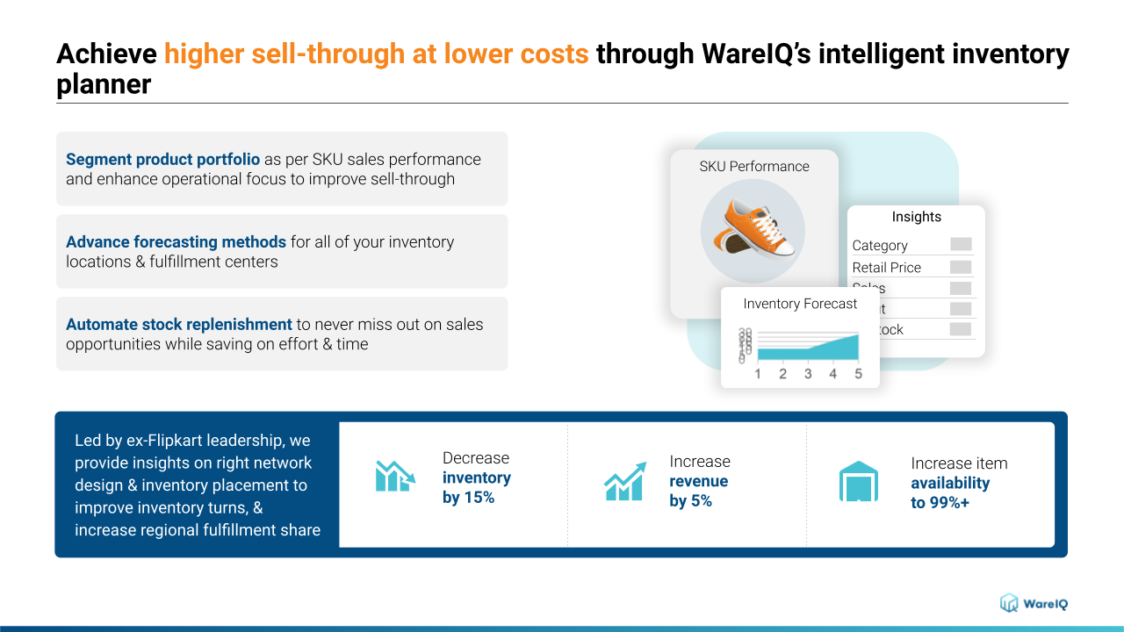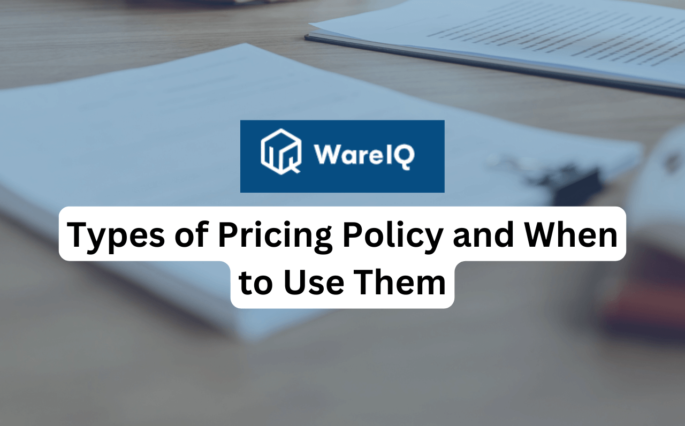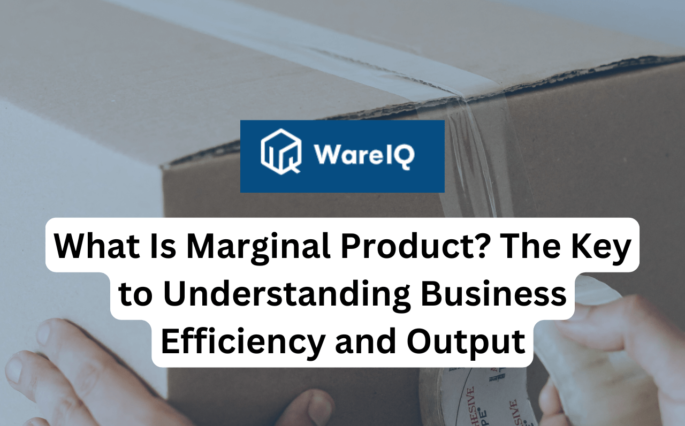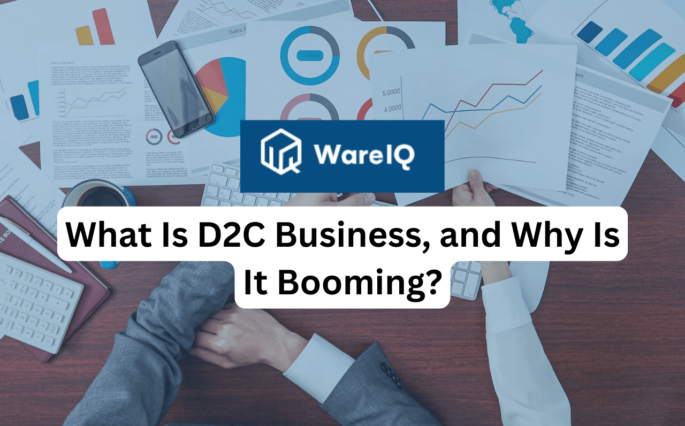eCommerce Pricing Strategy 101: Top 10 eCommerce Pricing Models to Increase Sales and Boost Profitability in 2025

Setting the proper price for your products is a balancing act and it can be a challenging one at that. Deciding on an eCommerce pricing strategy is a crucial component of your overall business strategy. You will lose business if you charge too much, but the reverse is also true. So how do we decide which tactic to employ?
There are numerous approaches to shortlisting an eCommerce pricing model and which method is ideal for your company relies on many variables. No matter how much experience you have, finding the perfect prices for specific products and offerings will require time and experimentation. Understanding the various eCommerce pricing models that the majority of businesses employ as well as the ramifications of some tried-and-true pricing schemes is therefore helpful. In this article, we’ll examine 10 of the best price strategies for online stores as well as the importance and factors that can impact your eCommerce pricing strategy in 2024.
- What is an eCommerce Pricing Strategy?
- Importance of Choosing an eCommerce Pricing Model
- Factors to Consider When Creating an eCommerce Pricing Strategy
- 10 Best eCommerce Pricing Models and Examples to Increase Profits for Your Online Store in 2025
- Conclusion
- eCommerce Pricing Strategy: FAQS
What is an eCommerce Pricing Strategy?
An online retailer’s or merchant’s method for choosing an eCommerce pricing strategy that takes into account manufacturing costs and revenue targets, such as average order value (AOV) and lifetime customer value, is known as a pricing strategy. A pricing strategy is not a discounting strategy, though you can absolutely use discounting strategies as part of your overall price strategy. Calculating the value of your finished goods, however, is more difficult than you may imagine. If the price is either too high or too low, you risk permanently losing a potential consumer.
For this reason, businesses employ eCommerce pricing models. These techniques are used to set prices after thorough consideration and research. Setting prices that will increase eCommerce sales while fending off competition is the main goal. Numerous considerations will determine the eCommerce pricing strategy you should choose.
WareIQ, an eCommerce fulfillment company, empowers online brands with a superior-tech platform to compete with Amazon like service levels by bringing their average delivery timelines from 5-10 days to 1-2 days.
Importance of Choosing an eCommerce Pricing Model
Consumers Can be Lost to Competitors
Consumers may now examine and compare the pricing of the same goods across several retailers using specialized apps. So certainly, it’s more difficult than ever to choose the correct pricing for your goods.
Helps in Identifying the Right Product Pricing
You won’t be able to sustain your business over the long term if the price is too low. However, you’ll also lose a lot of people who can’t afford your brand if the pricing is too expensive. Choosing the right eCommerce pricing strategy is extremely important to achieve the sales objectives you desire.
Assists in Business Growth and Expansion
Establish long-term goals for your company and utilize them as the basis for all decision-making before deciding on a price plan. You may scale your firm and boost revenue in the future by adhering to those goals.
Helps Businesses Adapt to Various Circumstances
Even if you have the ideal price strategy for your online store, be prepared to change it occasionally. In a world that is constantly evolving, you should never limit yourself as a business owner to a single plan.
Factors to Consider When Creating an eCommerce Pricing Strategy
Some people believe that the most crucial factor to consider when determining prices for a product is how much the competition is charging. This is not completely accurate. There are additional aspects to take into account, even though competitors’ prices can be instructive. Some of them are listed below:
Define Your Objectives
As was previously said, a key component of a pricing strategy is researching prices from rival businesses. You may be guided by this so you can set objectives and boundaries for your own business. It is important to understand how much you want to sell, which products are more profitable than others, and how you can maintain profit margins while also ensuring customer satisfaction.
Know Your Customers
Customers are the most important consideration when setting a product’s price. A research-based buyer persona, which is a profile of your ideal consumer and the price range they will accept, is what you should aim to create.
Speaking with your current customers is one technique to create a buyer persona. For instance, if you have a call center or team that interacts with customers, encourage them to bring up pricing in conversation. You can also utilize the Van Westendorp price sensitivity meter, a quick questionnaire that can assist you in determining the eCommerce pricing model for a product in order to optimize potential sales.
Consider Hiring a Pricing Analyst
Identifying the appropriate eCommerce pricing strategy for your company is very important and if you can’t get the results you want, consider consulting with a pricing analyst. The amount spent can be offset by the increased profits involved in getting your pricing model right. For instance, you shouldn’t settle for becoming merely another company that sells goods that are commonly sold in the market.
Identify the Unique Selling Point of Your Brand
Find out what you have to offer that no one else does and consider it as a further element that affects your pricing. Contrary to popular belief, having a distinctive value proposition is beneficial for more than just branding and can justify you charging more than your competitors for similar products if the customers are able to perceive the additional benefits.
10 Best eCommerce Pricing Models and Examples to Increase Profits for Your Online Store in 2025
Depending on your objectives, an eCommerce pricing strategy can assist you in determining what pricing would yield the maximum rates of client acquisition, customer retention, sales, profits, or conversions. There are many different pricing methods, but these 10 are the ones that rising eCommerce businesses employ the most:
Competitive Pricing
74% of consumers, according to Forrester data from 2016, use search engines to look up products and compare offerings from other retailers and businesses. Consumers viewed many websites before entering their credit card information as early as 2012 when internet shopping was still a tiny portion of what it is today. Even though these numbers are ten years old, they are still relevant. Consumers today have access to even more resources for comparison shopping, such as applications and comparison websites.
The tactic of competitive pricing involves establishing a price depending on what your rivals charge in order to account for this pattern in consumer behaviour. Although it’s straightforward and low-risk, it doesn’t consider how much your buyers think your products are worth. Put simply, by setting your prices for your goods too low in a “race to the bottom,” you can be losing out on sales and lowering your profit margins.
Examples of Competitive Pricing
One factor in Fashion Nova’s rapid ascent within the eCommerce fashion sector was its use of influencer marketing. The additional cause was its aggressive pricing policy. With an estimated 95% of its products retailing for less than $50, customers are encouraged to purchase items at full price. Even the more expensive goods are affordable; a formal outfit costs only $75. In fact, the similarity to rival stores like Forever 21 is the whole objective. Because affordability is a built-in feature, more buyers are able to buy the products.
Value-Based Pricing
Value-based pricing, the favoured eCommerce pricing strategy employed by many pricing analysts, enables you to determine a price based on how much consumers think your products are worth. It often yields bigger mark-ups and is more profitable than competitive pricing and cost-plus pricing, making it the best choice for scaling organizations that are considering long-term growth.
Value-based pricing is effective for businesses that have a differentiating trait, like sustainability, ingrained in their very being. According to the 2021 Global Sustainability Study, more than one-third of people (34%) are willing to pay more for sustainable goods or services and would tolerate an average price increase of 25%. Additionally, firms that enjoy a devoted following, such as those who sell art, collectables, luxury items, or status symbols, benefit greatly from this pricing strategy.
However, because it necessitates thorough market research and analysis, it is more challenging to determine a price using this approach. Additionally, even if your brand is well-known, you cannot rely solely on your success when it comes to value-based pricing.
You May Like: Sell Through Rate in eCommerce
Examples of Value-Based Pricing
Chanel’s 2021 Advent Calendar serves as an illustration. After it was discovered that the US$825 “holiday swag” hamper was actually filled with cheap stickers and gifts with purchase products, the luxury fashion firm was attacked on social media. All of the products’ combined estimated regular retail value came to roughly US$350. Value-based pricing enabled Chanel to have a high-profit margin, but the company was obliged to issue an apology, which hurt its brand.
Price Skimming
Price skimming might be the best eCommerce pricing strategy if you’re marketing a truly unique or revolutionary product. It entails setting a high price and decreasing it as more rivals appear and start selling comparable products. This enables businesses to generate revenue while there is little competition and then decrease prices to stay competitive later.
Tech giants most typically utilize price skimming when they launch a new product and assume that early users will be loyal. This is key, as price skimming isn’t successful unless you’re confident your customers will see the forthcoming product as high-quality, exclusive, and worth shelling out for.
Examples of Price Skimming
Apple is likely the most well-known user of the price skimming tactic, which is frequently adopted by tech businesses. It focuses on providing a select few high-end products while producing a halo effect that makes clients hanker after other goods. Then, once the early adopters have the products and rivals start to appear, prices start to decline.
For instance, a 64GB edition of the original iPad, which was a unique device at the time, cost $699 when it debuted in 2010. That amounts to around $850 after inflation. But ten years later, a wide variety of manufacturers are flooding the market with tablets. And now, you can get a brand new 64GB iPad for just $329.
Penetration Pricing
Penetration pricing, which is essentially the opposite of price skimming, performs best when a brand enters a market that is already highly competitive which involves initially setting its prices modestly and increasing them from there. In order to attract new clients and raise brand awareness, this is another situation where discount codes and marketing techniques can be really useful. The risk of penetration pricing is that it might harm your brand’s reputation or make customers think less highly of your goods or that they are of inferior quality.
Suggested Read: How to Re-Engage Online Customers Through a Branded Tracking Page in 10 Ways?
Examples of Penetration Pricing
Blockbuster still had a monopoly on the market when Netflix first came out in the late 1990s. Although it was the go-to location for Friday date-night movie selection, it had significant downsides, including expensive rental costs. A three-day rental costs $4.99 and the price increases if it is returned after its due date.
Enter Netflix. They did away with late penalties and provided affordable prices, such as four movies for less than $16 per month, to gain market share. The company was able to boost its prices to increase profit margins once consumers were comfortable with the Netflix brand and the competition had been completely eliminated.
Bundle Pricing
Product bundle pricing refers to the practice of retailers selling many products at a single price. This typically occurs in a variety of ways with upsells, cross-sells and BOGO deals being some of the more prevalent forms of bundling. Bundle pricing can boost sales volumes but if done incorrectly, it also runs the danger of hurting profitability.
Examples of Bundle Pricing
2019 saw the implementation of bundle pricing by Roma Designer Jewelry with the intention of raising its AOV. A pop-up window offered customers the option to “Bundle and Save” when they placed an item in their shopping basket, along with a suggested item to pair it with. With the help of cross-selling widgets, the business observed a boost in AOV of over 21%, with one out of every five customers purchasing a recommended item.
Psychological Pricing
Psychological pricing techniques, also known as charm pricing, are the reason why retailers are more inclined to sell an item at $19.99 than $20. Numerous studies have demonstrated that pricing ending with odd numbers – and particularly those that end with the number “9” – tend to have noticeably greater conversion rates. This strategy dates back to the 1880s. William Poundstone, the author of Priceless: The Myth of Fair Value (and How to Take Advantage of It), claims that charm prices, when contrasted to rounded values, increase sales on average by 24%.
The most common psychological pricing tactic is to lower prices by one cent, although other strategies are also included in this category, such as providing installment payments or employing anchor pricing (where the old price is removed and posted next to the new price) to boost sales. There are some tried-and-true psychological pricing techniques in use, but most retailers use A/B testing to identify which are the most successful.
Examples of Psychological Pricing
Charm pricing is prevalent on almost all eCommerce websites, so you won’t have to look very far to find examples of it. Death Wish Coffee uses the number nine to describe the price of its bean bags: $19.99 for one pound. They also use anchor pricing, which places the price for one pound ($19.99) next to the prices for two pounds ($37.99) and five pounds ($79.99), as another psychological pricing strategy. It doesn’t take a math genius to understand that purchasing in bulk results in significant savings, raising AOV.
Cost-Plus Pricing
Cost-plus pricing also referred to as markup pricing, generates income by adding a fixed margin of percentage to the product cost. You just need to gather the overhead costs such as labour, supplies, and infrastructure and add a profit margin anywhere between 50% to 100%.
It is one of the most-used eCommerce pricing models, especially among startups and smaller companies as it is easy to calculate and transparent. However, some companies consider this strategy to be so simple that they don’t require an accountant which is a wrong assumption that leaves room for errors and can lead to huge economic losses for the company.
Examples of Cost-Plus Pricing
Retail-oriented companies such as supermarkets, clothing, and departmental stores generally use cost-plus pricing due to the fact that there is variation in the items being sold and different markup percentages can be applied to each product.
Suggested Read: What is Retail Distribution
Anchor Pricing
Anchor pricing enables customers to check how much money they would save if they bought a discounted product. The original price is showcased along with the discounted one. You can also keep your products with a similar one that has a higher asking price to show customers that they are able to save money and get a good deal by choosing the less-expensive option. You need to establish a balance between offering a good deal and preventing customers from being skeptical about being offered a lower-quality product.
Examples of Anchor Pricing
If you are browsing Target and want to buy laundry detergent, you can observe that Target’s own making is around 30% cheaper than other major companies such as Tide. Because they are stored next to each other and customers can see how much they save if they opt for the Target option, they end up purchasing it.
Premium Pricing
This eCommerce pricing strategy is primarily utilized for high-end luxury and expensive goods. Its objective is to reflect the quality and image that is attached to the brand so that customers will instantly recognize that they cannot expect a discount or to find a better-value alternative elsewhere.
If your commodities are in the range of extravagance, premium pricing can be very favourable because it tends to provide higher profit margins. It also sets your brand apart from potential customers. The largest drawback of premium pricing is that both your target customer base and your product options are quite limited. According to Statista, most people are only willing to pay high-end prices for clothing, technology, and accessories.
Examples of Premium Pricing
A well-known example of premium pricing is Apple, which often prices its products well above its competitors but is aware that customers will still buy them because they want to be associated with the brand name that isn’t found elsewhere.
Loss-Leader Pricing
This eCommerce pricing model comprises bundling or promoting a discounted item with additional commodities. This advances the average order value which makes it a very profitable eCommerce pricing strategy. Loss-leader pricing is a good way of encouraging customers to buy more products. Providing bundles or offering accessories can also help you recapture profits from a period of earlier loss or sell inventory that has been in storage for long periods of time. However, it will only work in the long term if you are able to grab your customers’ attention with other items that are not part of any bundle.
Examples of Loss-Leader Pricing
Large companies like Amazon and Walmart have used loss-leader pricing to expand their operations. Amazon is the most dominant eCommerce company in the world and they also happen to use loss-leader pricing to sell additional products.
Suggested Read: How to Choose the Best Amazon Pricing Strategy to Get Ahead of the Competition in 2025
Conclusion
The nature of your business and your objectives will always play a significant role in determining the ideal eCommerce pricing strategy for your business. You must keep in mind that prices might change at any time so therefore, you must regularly review your eCommerce pricing model. It’s fairly uncommon for you to be required to use many pricing methods at once. Analyze the market and make sure your customers are getting value from you. Since they are intelligent, your pricing plan must match their requirements. If you need assistance with fulfilling eCommerce orders once you have chosen a pricing strategy, WareIQ can help.

WareIQ is one of India’s fastest-growing eCommerce fulfillment companies. We have facilities such as a nationwide network of fulfillment centers, a custom WMS that can track and update inventory in real-time, integration with more than 12 eCommerce selling platforms to consolidate all your order data in one place, ultra-fast shipping through a choice of more than 20 shipping aggregators and much more.







